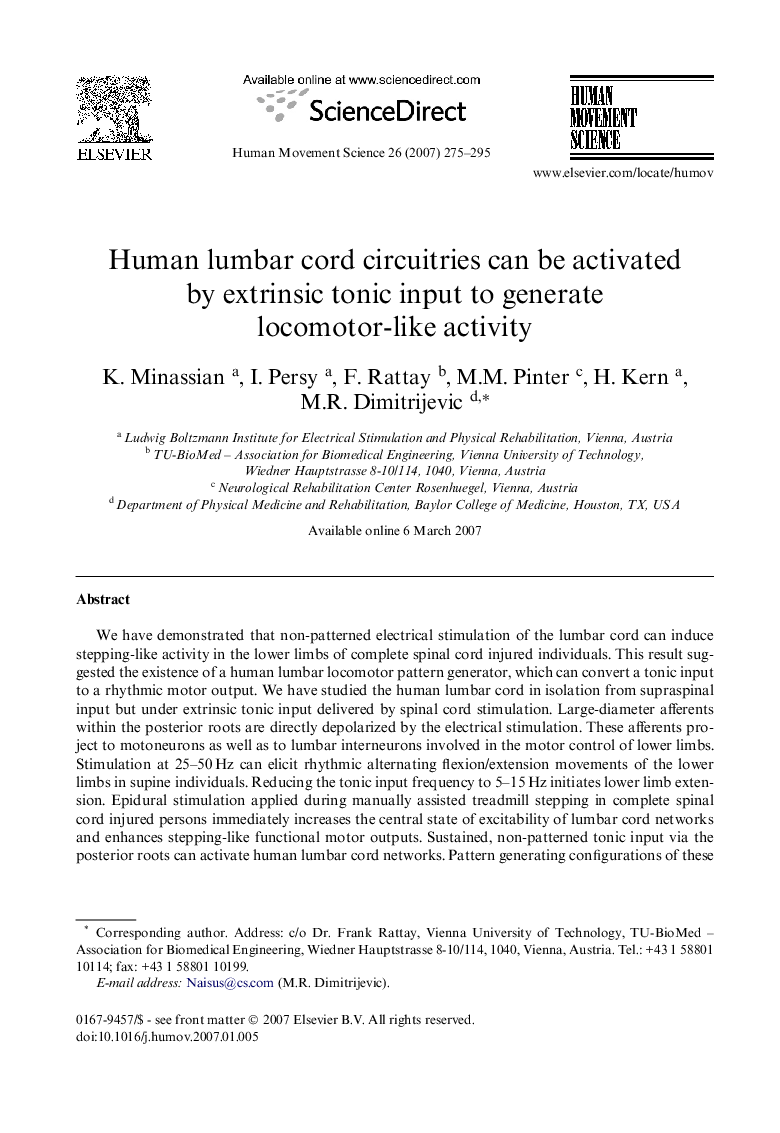| کد مقاله | کد نشریه | سال انتشار | مقاله انگلیسی | نسخه تمام متن |
|---|---|---|---|---|
| 928942 | 922408 | 2007 | 21 صفحه PDF | دانلود رایگان |

We have demonstrated that non-patterned electrical stimulation of the lumbar cord can induce stepping-like activity in the lower limbs of complete spinal cord injured individuals. This result suggested the existence of a human lumbar locomotor pattern generator, which can convert a tonic input to a rhythmic motor output. We have studied the human lumbar cord in isolation from supraspinal input but under extrinsic tonic input delivered by spinal cord stimulation. Large-diameter afferents within the posterior roots are directly depolarized by the electrical stimulation. These afferents project to motoneurons as well as to lumbar interneurons involved in the motor control of lower limbs. Stimulation at 25–50 Hz can elicit rhythmic alternating flexion/extension movements of the lower limbs in supine individuals. Reducing the tonic input frequency to 5–15 Hz initiates lower limb extension. Epidural stimulation applied during manually assisted treadmill stepping in complete spinal cord injured persons immediately increases the central state of excitability of lumbar cord networks and enhances stepping-like functional motor outputs. Sustained, non-patterned tonic input via the posterior roots can activate human lumbar cord networks. Pattern generating configurations of these multifunctional circuitries can be set-up depending on the stimulation parameters and particularly on the input frequency.
Journal: Human Movement Science - Volume 26, Issue 2, April 2007, Pages 275–295